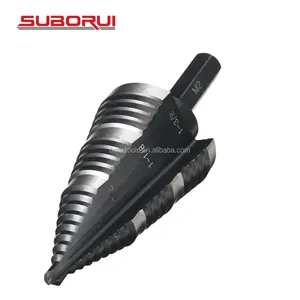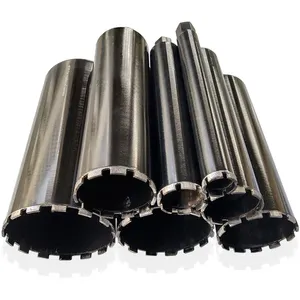

SUBORUI Customized Dual Fluted Stepped Bit HSS 6542 M2 19 Sizes Hex Shank 7/8 To 1-3/8" Inch Unibit Cone Metal Step Drill Bit

OD 32-900mm Drilling Tools Concrete Diamond Core Drill Bits For Concrete Reinforced Concrete Brick Wall





















Drill bits are essential tools in construction and manufacturing, with the fishtail drill bit being a notable category. Designed for precision and efficiency, these bits are suitable for creating clean, accurate holes in a variety of materials.
Fishtail drill bits come in several types, each tailored for specific materials and applications. For instance, flexible drill bits are adept at penetrating bricks, blocks, and stones, while paddle bits, with their broad, flat blades, are ideal for swift boring through diverse materials. For tougher tasks, such as drilling through stoneware tiles, diamond tip drill bits are recommended due to their durability and precision.
The construction of a fishtail drill bit determines its suitability for various tasks. Materials like carbon steel and carbide are common in these bits, providing the necessary hardness and resistance for drilling through tough surfaces. The design of fishtail bits allows for efficient removal of debris, ensuring a clean drilling process.
Using the appropriate fishtail drill bit can significantly enhance drilling efficiency. Their specialized tips allow for precise starts, and their design can help extend the lifespan of the bit with proper use, such as employing cold water to prevent overheating during drilling operations.
Maintaining the sharpness of drill bits is crucial for optimal performance. Fishtail bits can be sharpened with regular or diamond files, ensuring longevity and consistent results. Additionally, adjustable speeds on these bits allow for controlled drilling, adapting to the material's resistance and depth requirements.
Selecting the correct fishtail drill bit is vital for any drilling task. Factors to consider include the material to be drilled, the desired hole size, and the drill bit's compatibility with the drilling equipment. Ensuring you have the right bit for the job can lead to better outcomes and a more efficient drilling process.